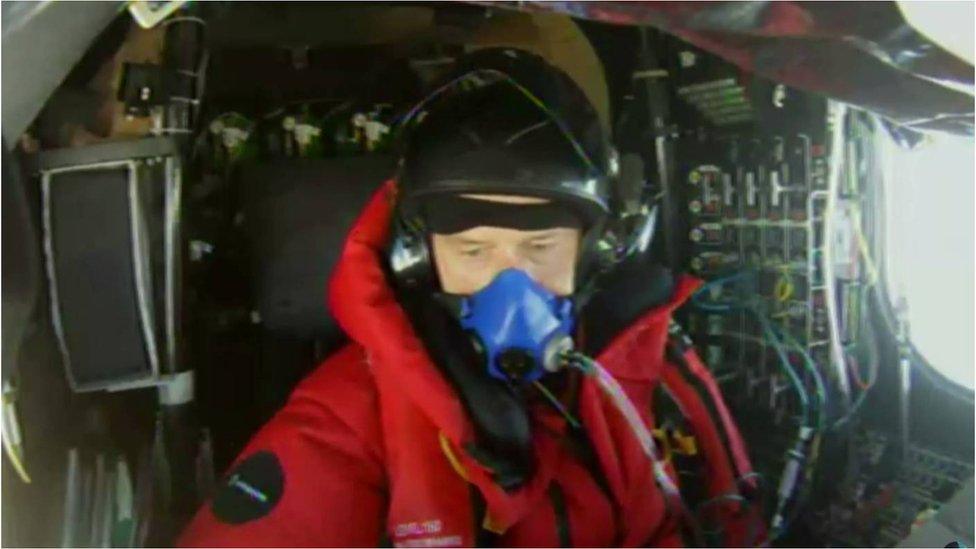Solar Impulse flies over night-time New York
- Published
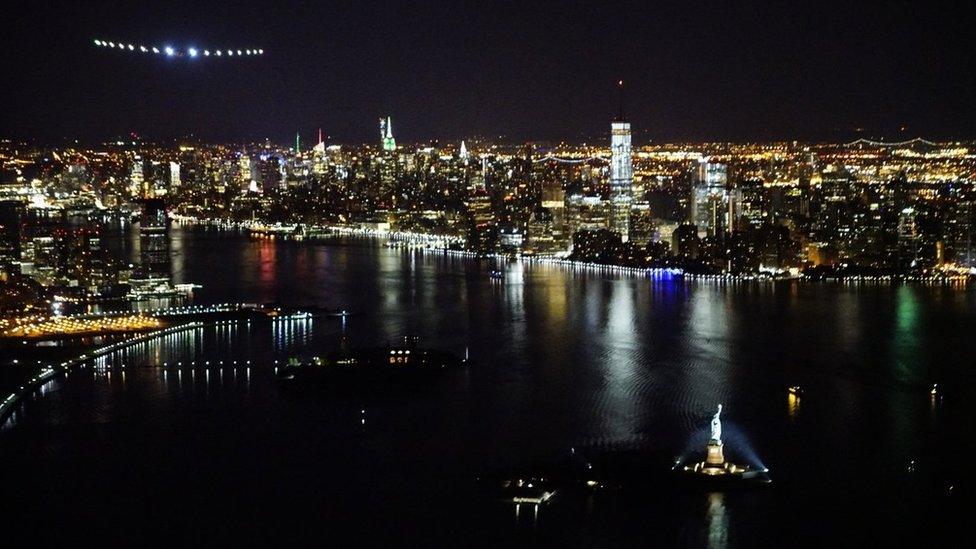
Solar Impulse spent some time being photographed from a chasing helicopter
The solar-powered plane Solar Impulse has arrived at New York's JFK airport after making the short trip from Lehigh Valley in Pennsylvania.
Taking off late on Friday night local time, the aircraft spent a good part of the journey turning around the Statue of Liberty for a photoshoot.
This latest flight marks the completion of the trans-America portion of the quest to circle the globe on no fuel.
Solar Impulse must now prepare for a daunting crossing of the Atlantic.
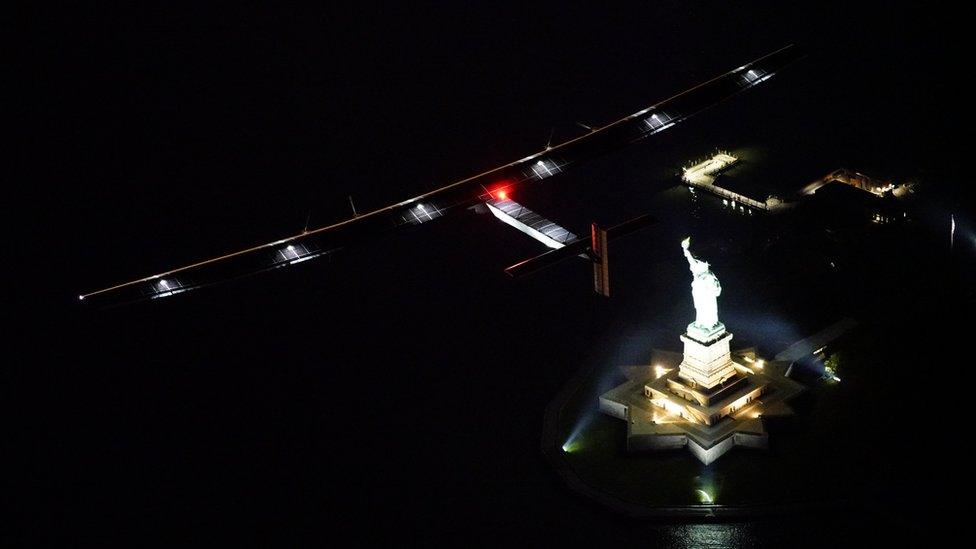
The plane flew over the Statue of Liberty just after 02:00 local time (06:00 GMT).
As he approached the famous landmark, pilot Andre Borschberg spoke with the BBC via satellite phone.
"The US is a country where you meet a lot of entrepreneurs and pioneers, and so to end our American crossing at the Statue of Liberty - which represents for me the freedom of enterprise and the freedom to innovate that is the spirit you can find in this country - is so symbolic."
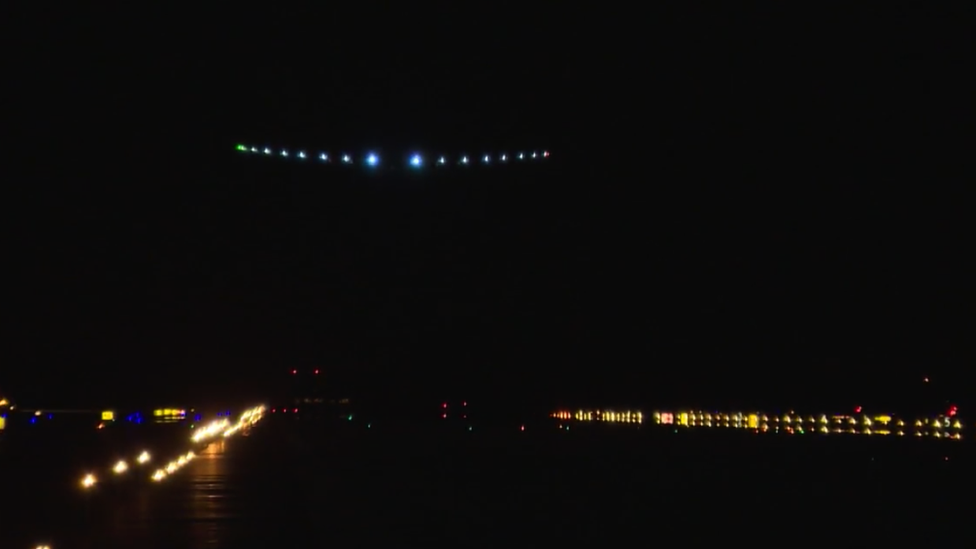
Landing at JFK: A solar-powered plane using its batteries to fly at night
Mr Borschberg's partner on the Solar Impulse project, Bertrand Piccard, will take over for the Atlantic leg.
Deciding when to cross the ocean will be a tricky decision. The slow-moving, ultra-light plane needs benign winds, and the team concedes that the right conditions may not present themselves for several weeks. "Patience will be the word," said flight director Raymond Clerc. "I expect the flight to take 3-4 days."
The team would like to aim for the French capital, Paris, to reference the historic first solo Atlantic plane crossing made by Charles Lindbergh in 1927. But the weather systems may simply not permit this, and take Solar Impulse instead further south, perhaps to Toulouse, or to Seville in Spain.
Return to UAE
The project has made excellent progress since renewing its global challenge in Hawaii on 21 April.
In 2015, Solar Impulse flew eight stages from Abu Dhabi to Kalaeloa, including a remarkable four-day, 21-hour leg over the western Pacific - the longest solo flight in aviation history in terms of the time it took.
It was damage to its batteries on that stage, however, that forced Solar Impulse to lay up for 10 months, for repairs and to wait for optimum daylight length in the northern hemisphere to return.
The global endeavour will be complete when the plane arrives back in Abu Dhabi.
Solar Impulse plane covered in 17,000 photovoltaic cells.
These either power the vehicle's electric motors directly, or charge its lithium-ion batteries, which sustain the plane during the night hours.
The project is intended as a demonstration of the capabilities of solar power.



LEG 1: 9 March. Abu Dhabi (UAE) to Muscat (Oman) - 772km; 13 Hours 1 Minute
LEG 2: 10 March. Muscat (Oman) to Ahmedabad (India) - 1,593km; 15 Hours 20 Minutes
LEG 3: 18 March. Ahmedabad (India) to Varanasi (India) - 1,170km; 13 Hours 15 Minutes
LEG 4: 18 March. Varanasi (India) to Mandalay (Myanmar) - 1,536km; 13 Hours 29 Minutes
LEG 5: 29 March. Mandalay (Myanmar) to Chongqing (China) - 1,636km; 20 Hours 29 Minutes
LEG 6: 21 April. Chongqing (China) to Nanjing (China) - 1,384km; 17 Hours 22 Minutes
LEG 7: 30 May. Nanjing (China) to Nagoya (Japan) - 2,942km; 1 Day 20 Hours 9 Minutes
LEG 8: 28 June. Nagoya (Japan) to Kalaeloa, Hawaii (US) - 8,924km; 4 Days 21 Hours 52 Minutes
LEG 9: 21 April. Kalaeloa, Hawaii (US) to Mountain View, California (US) - 4,523km; 2 Days 17 Hours 29 Minutes
LEG 10: 2 May. Mountain View, California (US) to Phoenix, Arizona (US) - 1,199km; 15 Hours 52 Minutes
LEG 11: 12 May. Phoenix, Arizona (US) to Tulsa, Oklahoma (US) - 1,570 km; 18 Hours 10 Minutes
LEG 12: 21 May. Tulsa, Oklahoma (US) to Dayton, Ohio (US) - 1,113 km; 16 Hours 34 Minutes
LEG 13: 25 May. Dayton, Ohio (US) to Lehigh Valley, Pennsylvania (US) - 1,044 km; 16 Hours 47 Minutes
LEG 14: 11 June. Lehigh Valley, Pennsylvania (US) to New York (US) - 230km; 4 Hours 41 Minutes

- Published26 May 2016
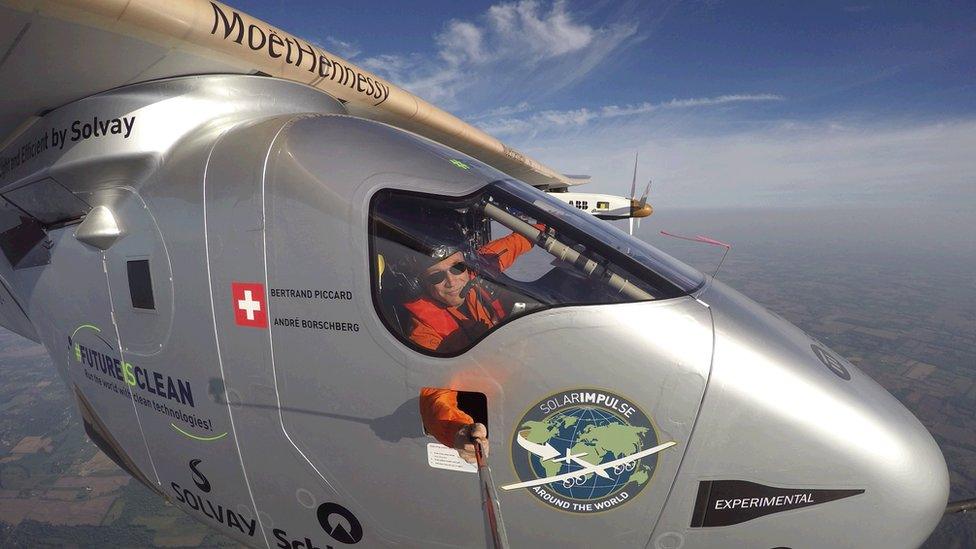
- Published22 May 2016
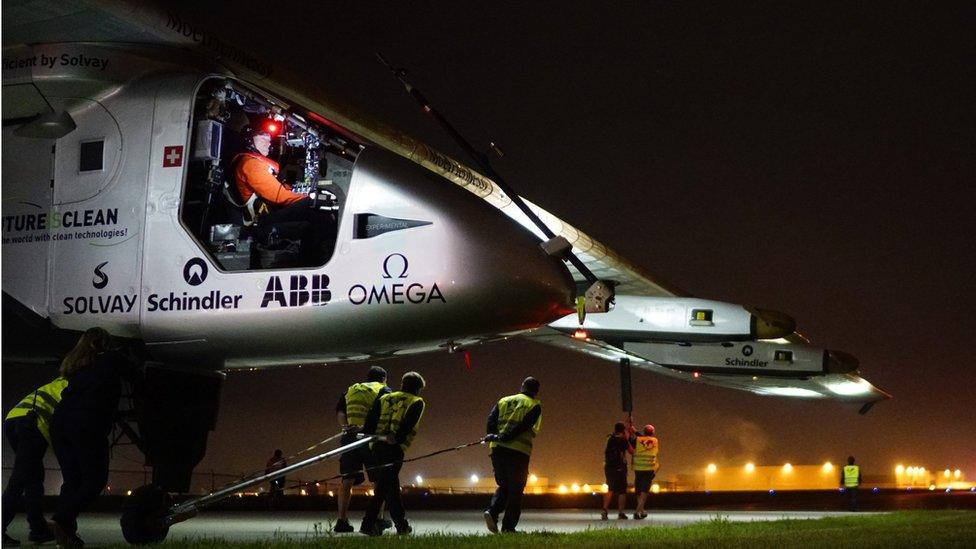
- Published13 May 2016
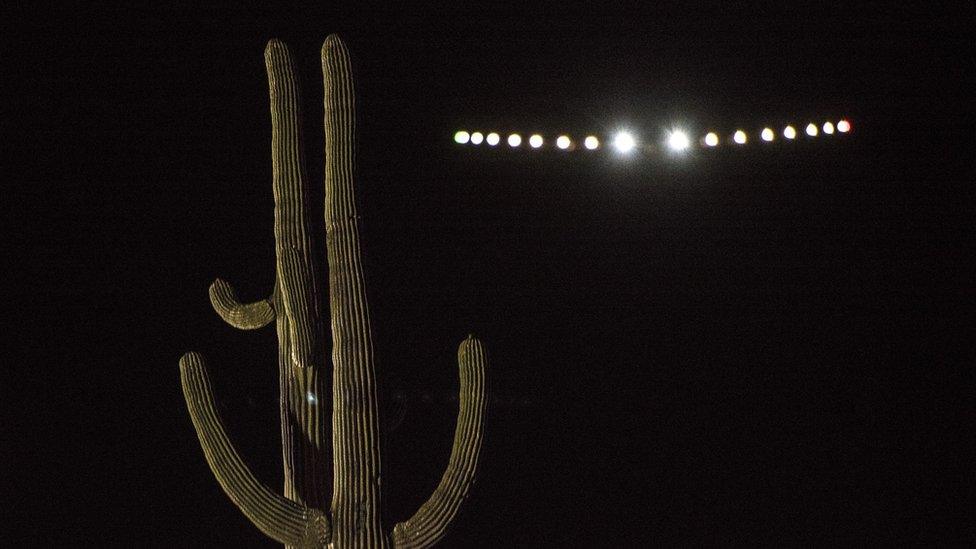
- Published3 May 2016
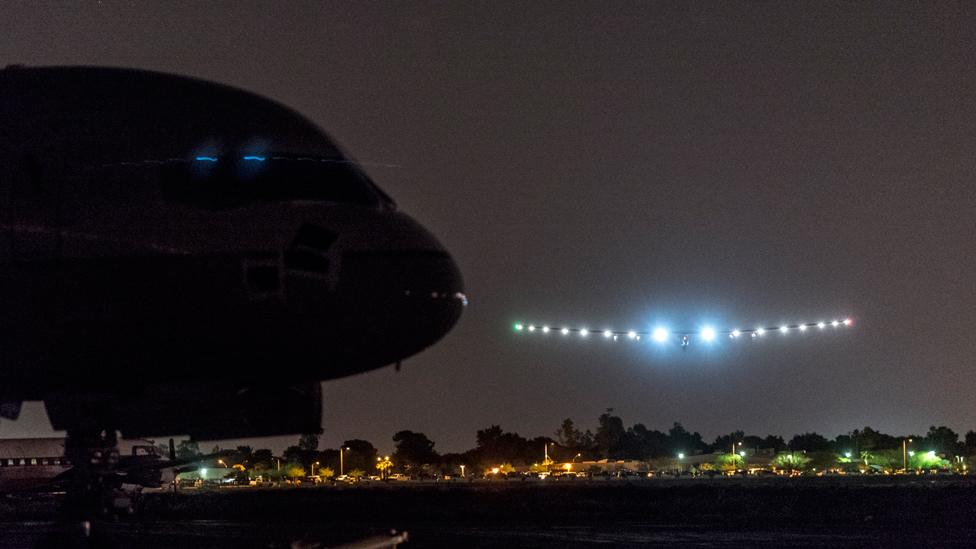
- Published24 April 2016
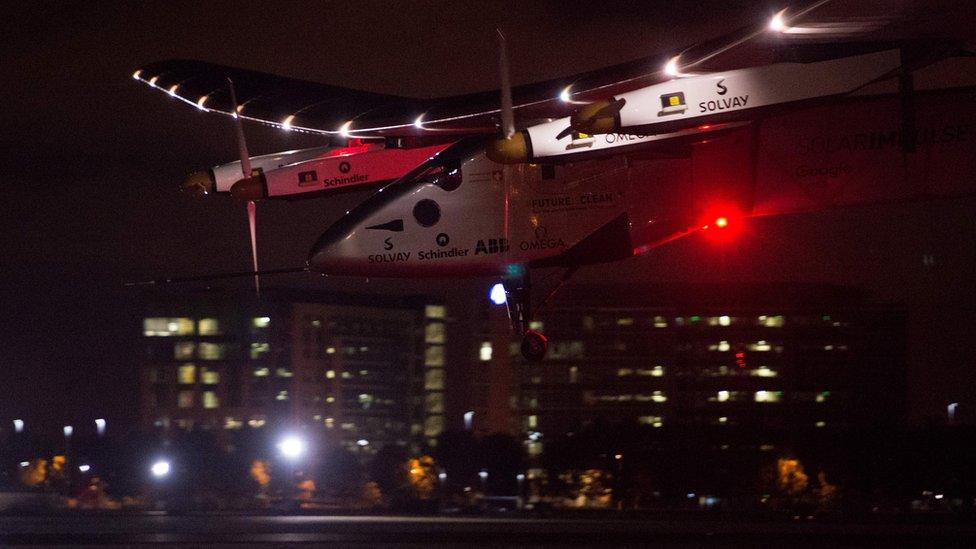
- Published16 April 2016
- Published2 July 2015
